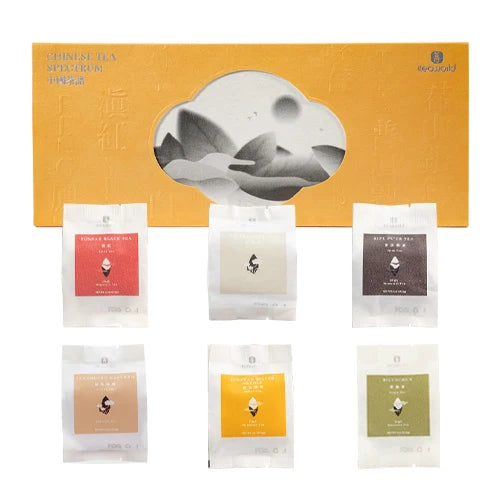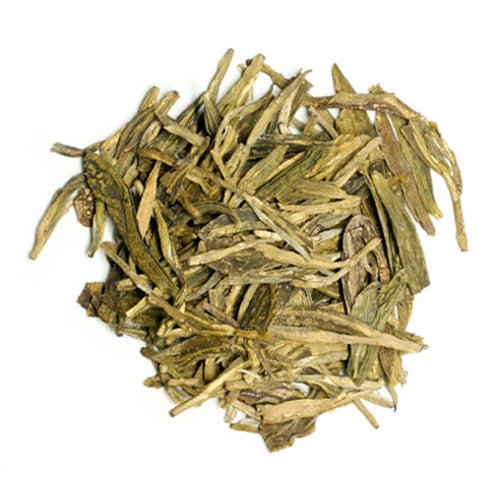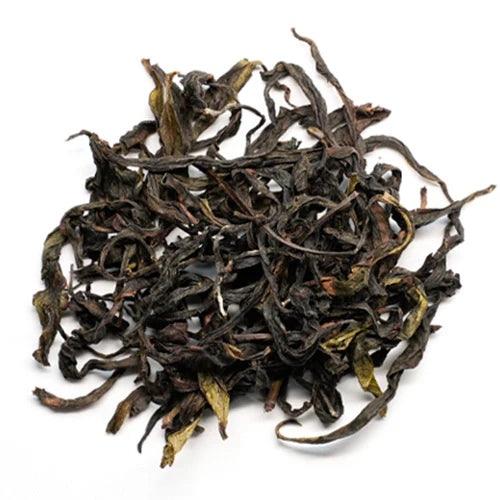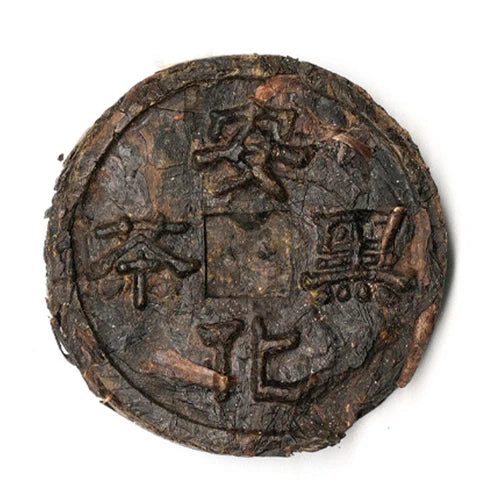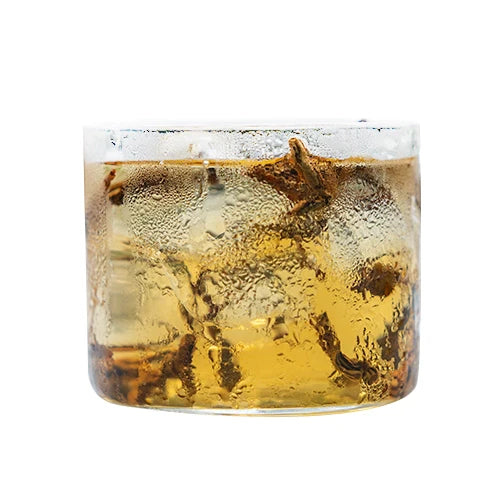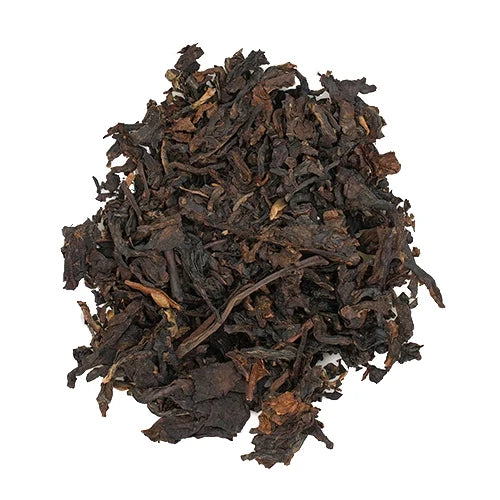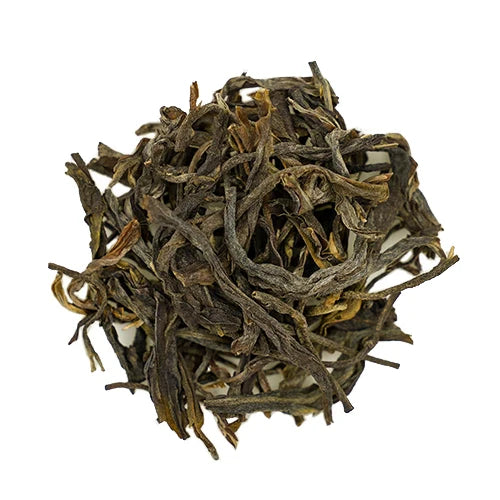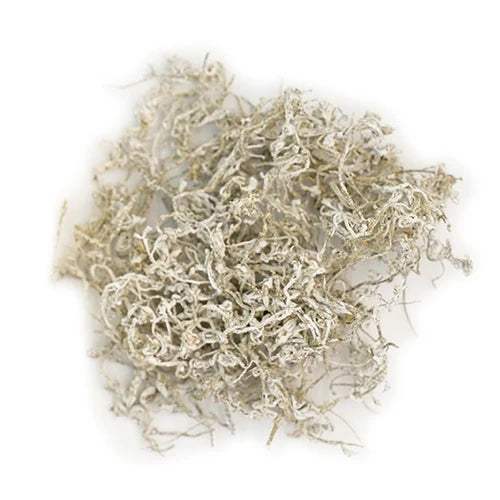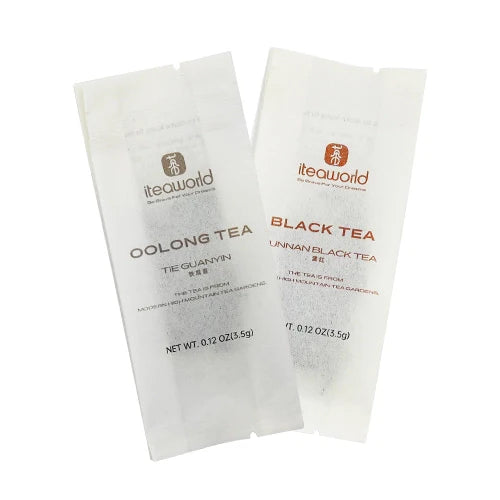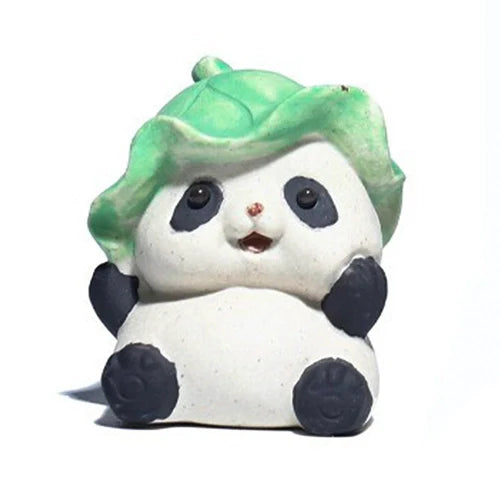How to Choose Oolong Tea
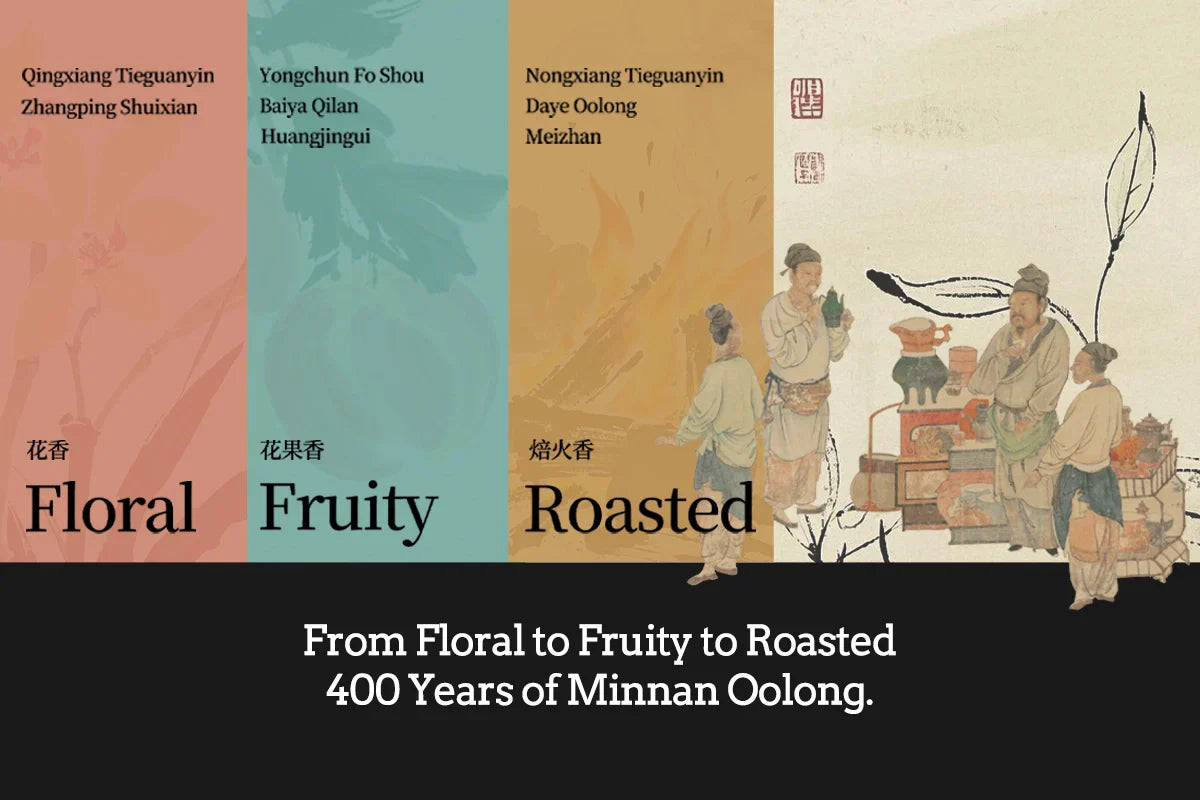
New to Oolong? Start with These 8 Southern Fujian Teas (Not Just Tieguanyin!)
When people talk about beginner-friendly Oolong teas, Tieguanyin is usually at the top of the list. But did you know this famous tea actually comes in two very different styles: light and roasted? And did you know the Minnan (Southern Fujian) region, where Tieguanyin originates, also produces other Oolong teas that are equally worth exploring?

How to Choose the Right Roasting Level for Oolong Tea
What’s the difference in flavor between loose leaf oolong tea with different roasting levels? And how can you tell how much a tea has been roasted? In this blog, we’ll break it down for you from different angles.
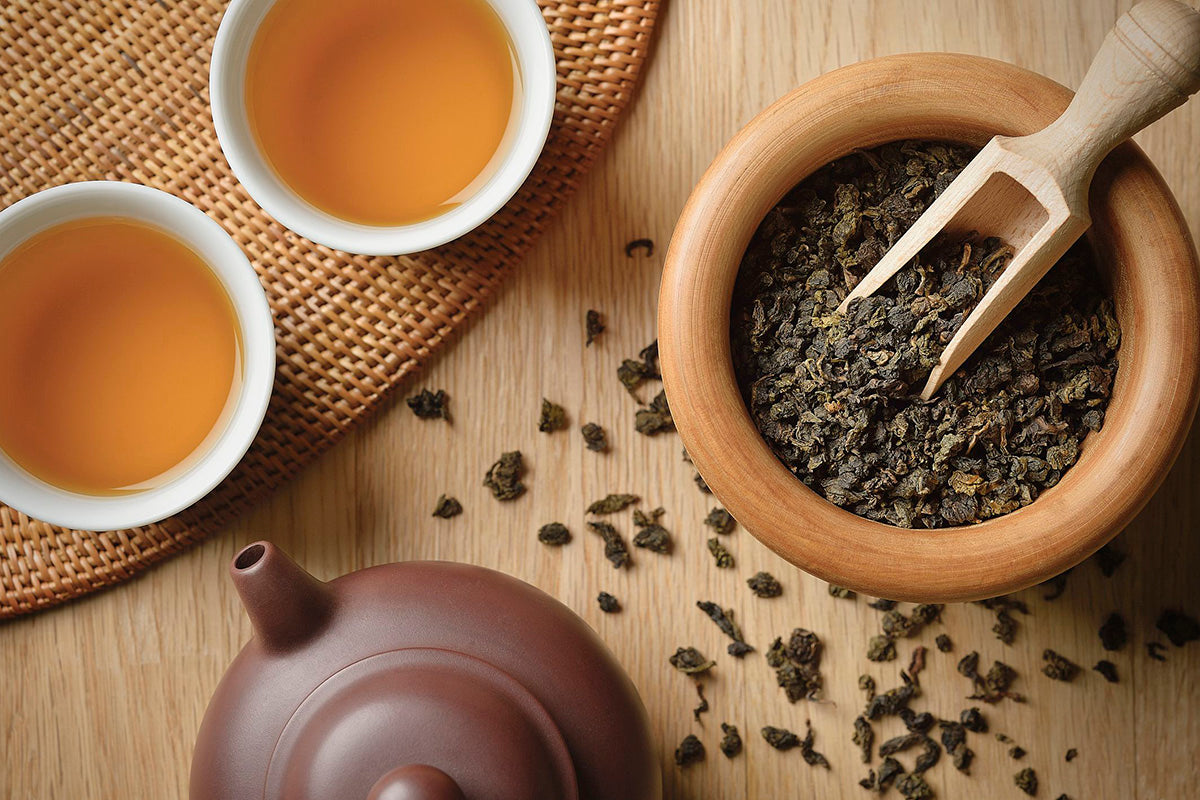
Loose Leaf Oolong Tea Buying Guide
I. Introduction
If you've been curious about oolong tea lately and would like to know more, this in-depth purchasing guide is for you. Oolong tea's special semi-oxidation process results in a delicious range of flavors. You will learn the essential qualities that set oolong apart from other tea varieties in this guide. Its cultural significance and health advantages will also be covered. Above all, you will receive professional guidance on where to find, how to choose, and how to brew premium loose leaf oolong teas. To fully enjoy oolong tea, keep reading to learn how to recognize reliable suppliers, assess freshness, comprehend regional styles, and optimize steeping. Discover the mysteries of this unique tea by continuing to scroll to start learning about oolong!
1. Definition and characteristics of Oolong tea
Oolong tea is a traditional Chinese tea that sits between green and black teas in terms of oxidation level. Often referred to as "wu-long" tea, it undergoes a unique semi-oxidation process where the tea leaves are wilted and rolled. This prevents full oxidation and allows the tea to retain a natural green color and refreshing flavor. The leaves then undergo varying degrees of oxidation before being fired. This results in oolong teas with diverse flavor profiles ranging from floral to roasted.
2. Brief history and origins of Oolong tea
Oolong tea originates from the Fujian and Guangdong regions of China, where it was first produced over 1,000 years ago during the Ming Dynasty. Several famous oolong varietals like Tieguanyin and Da Hong Pao began cultivation in Fujian in the 19th century. The intricate semi-oxidation processes used to produce these teas were kept as closely guarded secrets of local tea makers for generations. In recent decades, oolong tea cultivation has spread to other countries like Taiwan and parts of Southeast Asia but the best versions still originate from China.
3. Health benefits and cultural significance of Oolong tea
Strong antioxidants found in oolong tea have been linked to a lower risk of chronic illness and improved heart health, according to research. It also has a modest amount of caffeine, which can help control weight by increasing metabolism. Oolong tea is highly valued in Chinese tea culture because of its remarkable oxidation variations and deep, nuanced flavors. In addition to its perceived health benefits, such as supporting digestive health, it is commonly consumed for its refreshing qualities. Sets of oolong tea are often given as fine ceremonial tea.
To sum up, loose leaf oolong tea is one of the most well-known tea varieties in China because it has been cultivated for centuries, resulting in a variety of flavor profiles and many health benefits. Due in large part to its delicate balance of oxidation, tea is very popular all over the world.
II. Understanding loose leaf Oolong tea
1. What is loose leaf tea?
Loose leaf tea refers to tea that is sold in its natural form - freshly picked leaves that have been minimally processed. Unlike tea bags which contain tea dust, loose leaf tea retains all the leaves, including the buds that contain the highest concentration of healthy compounds. This allows for a fuller flavor extraction compared to tea bags. The leaves can be steamed, pan-fried or air-dried depending on the type of tea.
2. Why choose loose leaf Oolong tea over tea bags?
Compared to tea bags, loose leaf oolong tea has a number of benefits. First off, rather than whole leaves, tea bags usually contain fannings or dust. This implies that the flavor and health advantages are lessened. The ideal leaf to water ratio for extracting flavor is preserved in loose leaf oolong tea. Second, you can enjoy the tea's complex flavor profiles as it unfolds with each steep by reusing the loose leaves for multiple infusions. There is only one weak infusion per tea bag. Finally, you can adjust the amount of leaf, steeping time, and water temperature to taste-test your brew completely with loose leaf oolong.
3. Varieties and flavors of Oolong tea
Popular oolong tea varieties from China include:
● Tieguanyin: Hailing from Anxi, Fujian, this aromatic oolong has floral, orchid-like notes and a creamy mouthfeel.
● Da Hong Pao: Considered the "big red robe" of oolongs, it originates from Wuyi Mountain and has roasted, nutty flavors.
● Fenghuang Dancong: Grown in Fenghuang county of Hunan, this lightly oxidized oolong has intense fruity aromas like peach and grape.
● Baozhong: Medium oxidized oolong with brisk flavors and a reddish-brown leaf.
● Qingxin: Lightly oxidized tea with grassy notes; long and thin leaves from Fujian.
● Gaoshan Baozhong: Buttery, mineral-rich oolong from Taiwan's central mountain region.
● Shui Xian: Floral aromas and refreshing taste; green twisted leaves.
Retailers offer curated collections featuring classics like Tieguanyin, Da Hong Pao, Fenghuang Dancong and Minnan Shuixian sourced directly from growers. Browsing by region, oxidation level and popular varietals helps discover new oolong flavors.
Switching to loose leaf oolong tea unlocks fuller, more nuanced flavor profiles compared to tea bags. Exploring the diverse spectrum of oolong varieties lets you appreciate the subtle differences craftsmanship and terroir impart to these lightly oxidized teas. Loose leaf format also allows for multiple infusions to sustain the tea experience.
III. Factors to consider when buying loose leaf Oolong tea
1. Tea grade and quality
Loose leaf oolong tea comes in different quality grades based on size of leaf and degree of hand-picking involved. Top-grade leaves are larger, younger and picked earlier for optimum flavor and nutrition. Medium grades have smaller leaves, while fannings consist mainly of stems, stalks and tea dust giving weaker infusion. The fresher the leaves, the higher the polyphenol content and number of steepings possible. Don't focus solely on price - balancing quality and value ensures the fullest tea enjoyment.
2. Origin and terroir
Where tea was grown lends distinctive character due to soil, climate and elevation differences. Oolongs hail predominantly from China. Fujian province yields soft, floral varietals like Tieguanyin. Wuyi Mountain's rocky soils imbue Da Hong Pao with minerality. Guangdong imparts fruity notes to Dan Congs. Taiwan's central region coats Baozhongs in buttery richness. Terroir greatly affects a tea's individual personality. Discover new flavor profiles by learning notable growing regions.
3. Oxidation level and processing methods
Oxidation during wilting, rolling and firing controls each oolong's final complexity from minimally-oxidized to robustly oxidized. Processes like sun-drying versus pan-frying also influence taste. Light oxidation unlocks grassy aromas while high oxidation breeds roasted nuances. Medium levels balance these flavors beautifully. Consider how oxidation level and technique shapes characteristics when selecting your oolong.
4. Aroma and flavor profiles
Nose the tea to identify aromatic signatures - are floral, vegetal, honeyed or nutty notes detectable? Flavors range similarly from fresh to richly caramelized depending on blend. Tea samplers allow tasting diverse profiles to pinpoint favorites. Browsing descriptive flavor tags aids choosing teas fitting your taste preferences whether it be floral, fruity or dearly smoky.
5. Packaging and storage considerations
Vacuum-sealed packaging best retains freshness for up to two years unopened. Once broken, consume within six months and refrigerate remaining portions. Airtight containers prevent exposure drying leaves out. Storing away from light, heat and moisture maintains potency. Date-stamped packaging indicates ideal drinking windows for obtaining peak flavors. Proper shipment and storage extends quality from source to steeping.
Learning what distinguishes top-grade oolongs elevates appreciation for the leaf and artistry behind interpretations of terroir. Exploring aromatic and taste signatures aligns flavor profiles to personal liking. Understanding packaging and optimal storage maintains nutrients and potency at home. With dedicated exploration of these quality factors, you'll choose loose leaf oolongs tailored exactly to your refined preferences.
IV. Exploring different types of loose leaf Oolong tea
Now that you understand the key characteristics of oolong tea, it's time to discover some of the classic varietals. By sampling renowned Chinese cultivars, you'll begin to appreciate the diverse flavor profiles within this category. Let's explore traditional loose leaf oolong varieties featured in the Oolong Tea Sampler:
1. Tie Guan Yin
Origin: Anxi, Fujian
One of China's most renowned oolong teas. Also called 'Iron Goddess of Mercy', Tie Guan Yin is known for its light, floral taste with notes of orchid and honey. Harvested from old varietal cultivars, the leaves twist and curl into distinctive patterns enhancing complexity with each subsequent infusion. Its mellow mouthfeel and delicate aroma make it ideal for new oolong drinkers.
2. Da Hong Pao
Origin: Wuyi, Fujian
Literally 'Big Red Robe', this varietal has inspired legendary status. Grown atop fog-wrapped Wuyi Mountain soils rich in minerals, Da Hong Pao captures sweet roasted flavors without bitterness. Thought to stimulate creativity, its dense texture and rich fragrance showcase why Wuyi oolongs set the gold standard for Aficionados.
3. Fenghuang Dancong
Origin: Hunan
Fenghuang Dancong, also known as Phoenix Single Bush, is a highly sought after oolong tea originating from the Fenghuang Mountains in Hunan, China. This unique tea is grown on a single bush, allowing for a rich and complex flavor profile. It is hand-picked and processed with great care, resulting in a smooth and well-balanced brew with hints of honey and orchid. With its long history and prestigious reputation, Fenghuang Dancong is a must-try for any tea connoisseur looking for a high-quality and flavorful oolong experience.
4. Minnan Shuixian
Origin: Fujian
Minnan Shuixian, also known as Water Fairy, is a famous oolong tea from the Fujian province in China. Its name comes from the legend of a fairy who gave water to a thirsty tea farmer, resulting in the production of this exceptional tea. Grown on the Wuyi Mountains, Minnan Shuixian has a distinct mineral and floral flavor, with a smooth and silky texture. Its unique processing method, involving multiple roasting and aging steps, adds depth and complexity to its taste. Considered one of the top oolong teas in China, Minnan Shuixian is a must-try for any tea lover.
By sourcing classical Chinese oolong cultivars, aficionados more fully appreciate origins contributing unique flavor nuances. Overall, gaining familiarity foundational types serves stepping stone wider varietal experimentation ahead while laying framework understanding subtle flavor spectrum diversity within category. Overall high quality loose leaf suppliers offer viable options exploring premium leaf entirety through guidance curating premier selections adventurous palates keenest wishes fueling boundless future discoveries freely!
V. Sourcing and selecting high-quality loose leaf Oolong tea
For those wanting to explore the full spectrum of flavors within the oolong tea category, it's important to source from reputable retailers that specialize in curating top-quality options. With so many online tea vendors available these days, discerning the most trustworthy sources can take some research. This section will outline the key factors to consider when evaluating potential merchants for your oolong tea collection.
1. Trusted tea vendors and sources
When assembling your oolong tea collection, buy from merchants who have a track record of stocking premium options. Seek out stores managed by professionals in the tea industry who personally taste and select teas to guarantee their quality and freshness. Locating suppliers with direct sourcing connections is also advantageous since it gives you the assurance that the teas they offer have been grown, harvested, processed, and stored correctly.
Retailers ought to list all sources prominently on the pages of each product. Reputable stores will supply crucial information such as farm names of origin, when to pluck, processing methods, and necessary brewing instructions. Because of its transparency, one can determine the potential flavor profile of an oolong by analyzing its varietal and terroir. Using specialized vendors directly rather than through intermediaries also helps ensure the best possible freshness.
2. Evaluating tea freshness and quality
When choosing oolong teas from any vendor, freshness and quality are two important considerations. When crushed between the fingers, whole leaf oolongs should smell strongly to indicate freshness. Color and scent should correspond to the description. With time in storage, beans or particles should feel supple rather than hard and brittle. Adherence to reasonable freshness windows is ensured by packaging date coding.
When it comes to quality, high mountain oolongs in particular need to have lots of curled leaves instead of powder. Vibrant leaf color that reflects cultivar varietal should be present. Instead of being unduly roasted or withered, steaming levels should add aromatic complexity and well-balanced sweetness. Recommendations for sampling techniques also shed light on complex oolong profiles.
3. Understanding tea certifications and standards
Look for teas certified organic by accredited institutions where possible. This provides assurance that growing and production processes upheld sustainable, pesticide-free methods. Other noteworthy certifications include Fair Trade, which guarantees ethical sourcing and fair compensation for farming communities.
Local harvesting designations illuminate regional growing specialties as well. Protected origin seals like Taiwan's Alishan or China's Fujian impose stringent quality control to safeguard traditional farming techniques. Following industry outlined regulating standards cultivates consumer trust in merchant supply chains long term.
4. Reading customer reviews and recommendations
Lists of recommendations and evaluations from other parties are important resources to gather. Independent review forums and magazine rankings can be searched to uncover vendor reputations that go beyond sales copy. Read objective reviews on the quality of the customer service, order fulfillment times, product descriptions, and price matching guarantees. When selecting establishments from which to source premium oolong tea options, return policies and satisfaction compliance rates provide additional assurance.
The process of identifying high-quality leaf becomes easier when credible vendors are investigated using the above-mentioned credibility factors. Prominent establishments have dedicated time to carefully select their suppliers, prioritizing sustainably farmed products over mass-produced substitutes. Their knowledge allows them to provide purchase recommendations that are especially tailored to single varietal flights or carefully chosen oolong tea boxes that are ideal for tasting different regions side by side. Overall, prioritizing merchants with proven dedication quality leaf translates finding optimal oolong experiences for discerning palates in the long run.
VI. Brewing techniques for loose leaf Oolong tea
Now that you've selected some quality loose leaf oolong teas, it's time to discuss brewing methods that unleash their full spectrum of complex flavors. Proper steeping is key to experiencing oolong tea's subtle characteristics. This section provides brewing guidelines to get the most out of your new loose leaf oolong tea collection.
1. Water temperature and quality
When it comes to loose leaf oolong tea, a lower water temperature of 79-85°C is generally recommended to draw out delicate nuances without extracting bitter tannins. The ideal range may vary slightly depending on oxidation level and origin region but staying under 93°C ensures soft, balanced extraction
Additionally, filtered or spring water allows tasting a tea's natural characteristics undistorted. Minerals found in tap supply can overwhelm delicate flavors if not suited to a particular leaf. Adjusting PH levels is worth trying if brewing tastes unusually astringent.
2. Tea-to-water ratio
Most brew 1 teaspoon of loose leaf oolong tea per 6oz water for standard strength. More leaf per ounces steeped delivers bolder infusions while less steeps a milder decoction. Customize strength personal preferences or adjust based on tea varietal being enjoyed.
3. Infusion time and multiple steepings
Start with a shorter 30-60 second infusion to determine ideal ratio and water temp pairing. Subsequently steeps of 60-90 seconds usually yield peak complexity and notable antioxidants.
Crucially, loose leaf oolong remains highly steeps able like green tea. Multiple infusions reward patience, crafting varied elixirs through subtle transformations across reheatings alone. Patience reveals multi-faceted dimensions elevating oolong beyond singular flavor profiles.
4. Teaware and brewing vessels
Whether simple mug or intricate gaiwan vessel, what matters most stems from full leaf contact through infusion alone. As such, opting glass, ceramic or stainless options allow monitoring steeping progress easily through transparency. Opaque pots or kettles obscure visual queues critical novices and connoisseurs alike.
Additionally considering integrating an infuser or brewing basket compartmentalizes leaf tidily permitting removal directly through ease alone. Else some opt loose steeping directly within vessels, retrieve with stirring spoon upon desired strength alone. In all cases, hygienic, BPA-free, non-leaching materials protect internal and external antioxidants seeping through each sip uninhibited through surfacing contaminants alone entirely.
By following general brewing best practices tailored tastes alone, you'll coax unparalleled complexity from quality varieties freely gift boundless enjoyment through generations ahead through traditional methods cultivated eternally or innovated upon endlessly entirely through persistent experimentation and community sharing alike one with leaf entirely! Overall, brew with patience, precision and reverence extracting leafs finest alone.
VII. Storing and preserving loose leaf Oolong tea
Now that you've acquired your favorite loose leaf oolong teas, it's important to properly store them to preserve maximum freshness and enjoy the full spectrum of flavors for seasons to come. Following best practices will help guarantee your teas remain the best loose leaf tea for tasting time and again.
1. Proper storage containers and materials
The ideal storage vessel is an airtight container constructed from materials like glass or ceramic that won't impart off-flavors onto the leaf. Avoid using porous containers that can leach odors in or let moisture penetrate the tea. Match jar size closely to amount stored to limit excess air exposure prolonging freshness windows.
2. Ideal storage conditions and environment
Cool, dark and dry environments around 60°F provide optimal dormancy slowing natural oxidation processes. Bright light and heat both accelerate degrade. Avoid storing near strong smelling seasonings as well that may transfer aromas. Controlled kitchen pantries and cupboards work well.
3. Shelf life and freshness maintenance
Properly stored, whole leaf oolong maintains potency for approximately 1-2 years without significant degradation. Finely ground leaf powder starts showing age signs within 6-9 months. Monitor favorite varietals regularly rotating older batches to front maintaining consistent enjoyment longterm.
By thoughtfully considering storage factors outlined above, discerning tea lovers helped preserve prized loose leaf oolong collections retaining maximum nuanced complexities indefinitely through mindful preservation alone. With little effort, drinkers rewarded perpetual discovery evolving complex teascape variations through patient leaf alone. Overall, conscious storage translators continued revelation through seasons ahead through diligent care alone arise.
VIII. Pairing and enjoying loose leaf Oolong tea
Once you've cultivated your palate for quality loose leaf oolong tea, the next step involves experimenting creative consumption methods. This section explores traditional and modern means of appreciating these teas through pairings, ceremonies, and recipes.
1. Food pairings and flavor combinations
When consumed straight, loose leaf oolong enhances savory dishes through balancing flavors. Lightly oxidized varieties complement richer braised protein or seafood entrées. Their crisp acidity cuts fat without overpowering meals.
Medium roast oolongs complement Asian fare like dumplings, noodles or sweeter baked goods. Their fuller body lends layered complexity supporting varied ingredients. More oxidized styles pair charcuterie, cheeses or pastries, acting nearly alcoholic through nuanced sweetness.
Dessert connoisseurs find oolong heightens flavors through judicious touch. Their brisk tannins round out tangy sorbets or yogurt parfaits. Nuttier roasts complement brownies, muffins or crumbles delicately emphasizing teapecan or caramel layers.
Fresh berries remain untoppable partners, whether drizzled crepes, parfaits or pies. Floral varietals carry floral notes enhancing fruitiness subtly. Earthier types add structure lifting berry flavors naturally through balanced complementarity.
By experimenting loose leaf oolong pairings creatively, appreciating these teas integrates effortlessly into any meal through subtle touches alone elevating each dish simultaneously.
2. Traditional tea ceremonies and rituals
Through rituals centered around tea, traditions promote relaxed mindfulness. Inner serenity is sparked by balancing ceremony spaces. Rinsing leaves allows the complex flavors of the entire leaf to come through in every delicious sip, releasing any residual caffeine.
Changing up the steeps allows for the development of subtle flavors in just one infusion. Vigilant temperature control prevents overpowering palates with cautious brewing on its own. Over several extractions, the body is concentrated by gradually increasing the leaf:water ratio.
Incorporating tea pets, chinaware, or landscaping can promote stillness and naturally center fully present experiences. Let go as the brew rekindles attentive observation, ensuring that rituals are mindful solely through consistency. Ultimately, mindful practice with just leaves yields handcrafted serenity, one infusion at a time.
3. Exploring Oolong tea in modern recipes
Beyond traditions, creativity expands everyday enjoyment through culinary experimentation. Bakers infuse sponges lending floral acidity naturally elevating cakes without overwhelming other elements. Brew concentrates reduce into reductions signature character enhancing sauces perfectly.
Icers steep leaves infusing ice cream bases with distinctive notes lending liquid complexity through frozen formats. Bartenders steep leaves crafting syrups and tinctures utilized pasteurizing or carbonating cocktails naturally. Brews poach or massage into butters heightening sweet or savory spreads effortlessly.
By accessing limitless inspiration openly, brewing leaf expands flavors through continually improvisations alone removing all boundaries from leaf entirely through joyful tinkering bridging traditions seamlessly into modern living naturally.
IX. Frequently asked questions about loose leaf Oolong tea
Those beginning their journey exploring loose leaf oolong tea often have practical questions. This section addresses some common inquiries to help guide discovering these complex brews.
1. How does Oolong tea differ from green or black tea?
Oolong teas undergo a partial oxidation process between strictly green and fully fermented black teas. This allows for varied aromas blending green and roasted complexities uniquely. Caffeine levels also fall between green and black varieties. Overall, oolong offers delicate nuances hidden within vibrant colorations.
2. Can Oolong tea be flavored or blended?
Yes, some specialty vendors experiment infusing oolongs. However, purists argue against obscuring authentic varietal character. High grades stand alone requiring no enhancement. Lower grades may assimilate blendings subtly elevating compositions alone. Overall steeping straight expresses regional terroir most faithfully alone.
3. What is the shelf life of loose leaf oolong tea?
The shelf life of loose leaf oolong tea is 24 months. To keep loose leaf oolong tea fresh, store it in an airtight container away from direct sunlight and moisture. Proper storage will help maintain its flavor and aroma over time.
4. Is loose leaf Oolong tea more expensive than tea bags?
On a per-cup basis, loose leaf ultimately provides better value through multiple infusions alone. Quality vastly exceeds bags containing tiny fannings and dust cuttings alone. Individual leaves retain nutrients and flavors brew after brew without diminishing returns alone. Upfront costs offset through ongoing savings and superior eating experienced freely.
5. How to choose the right Oolong tea for personal preferences?
Consider taste proclivities whether fruity, floral or traditionally roasted. Intended use whether straight drinking or cooking also guides varietal selection. Regional styles offer diverse flavor profiles necessitating sampling various grades discovering unconscious patterns. Steeping variables further tailor perfect brew administered through trial extracting complexity freely for continuous rediscovery entirely.
By addressing frequent queries practically, curious palates feel empowered navigating vast varietal complexities mistress through tested techniques alone. Overall loose leaf oolong rewards inquisitive patience elevating mind through sensory exploration endlessly cultivating new appreciation entirely grown directly through leaf alone!
X. Conclusion and final recommendations
By now you should have a solid understanding of loose leaf oolong tea and how to find higher quality options. To recap some key points:
Source from reputable merchants that specialize in curating fine teas directly from origin farms. Vetting supplies ensures optimal freshness and quality.
Consider factors like varietal, harvest region, plucking season and processing style when selecting teas reflecting individual preferences. Sampling different styles aids determining favorites.
Store leaf properly in airtight containers away from light and humidity to preserve natural complexity for at least 1-2 years.
Adjust steeping variables like leaf amount, water temp and infusion time based on varietal to draw out peak complexity. Oolong remains steeps beautifully through multiple brews.
Join online discussion platforms like tea forums to learn techniques from experts worldwide expanding skills through shared hands-on experience.
It's time to let your inner tea expert loose! Loose leaf oolong invites endless exploration, whether it is consumed straight, used as a gift, or simply enjoyed as part of a relaxation ritual.
For inquisitive minds seeking superior pre-bagged varieties of quality leaves, experts such as iTeaworld maintain excellence by means of direct sourcing relationships that ensure peak freshness arrival intact worldwide. Examine vast selections on the internet with the help of purchasing guides; contrast subtle profiles that satisfy a range of tastes just by being honest.
In summary, I hope this guide inspires boundless passion that is freely savored for a lifetime, one intoxicating infusion at a time. Cheers to many adventures ahead that can be had with just leaf alone! Bon appétit! The future is still entirely your to shape; go forth and expand boundaries by consuming an infinite amount of complexity and imagination on your own!
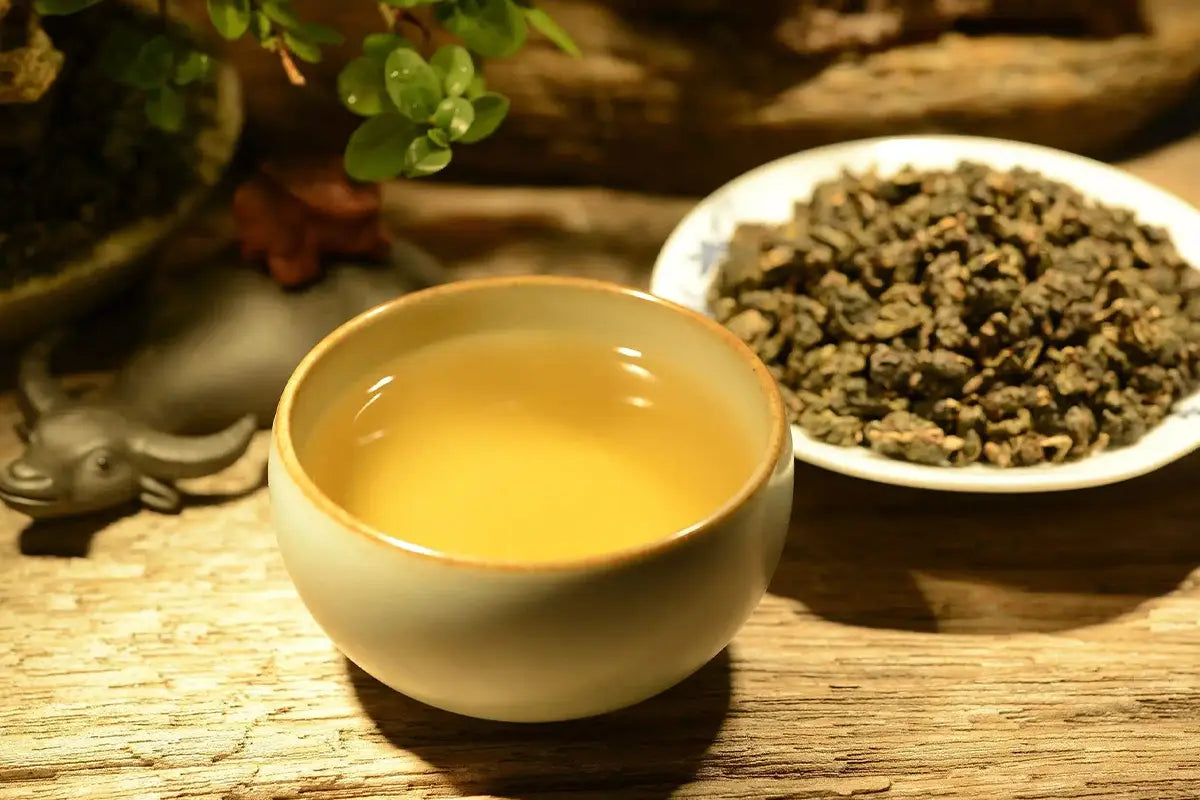
Most Famous Oolong Tea in China - Oolong Tea Buying Guide
Oolong tea, also known as "Qing tea," is an improvement on the black tea processing method and is a semi-fermented tea. After the tea buds have withered, they are processed to promote oxidation. Loose leaf Oolong tea combines the freshness of green tea and the richness of black tea. The standard for oolong tea in China is GB/T30357. In addition to the eight varieties such as Tie Guan Yin, Huang Jin Gui, Shui Xian, Rou Gui, Dan Cong, Fo Shou, Da Hong Pao, and Bai Ya Qi Lan, there is also oolong tea. Below, I will share these varieties of oolong tea with you all, hoping to help everyone choose oolong tea.
Each oolong tea has a different appearance. Oolong teas come in a wide variety of shapes, some of which are somewhat similar in appearance to loose leaf black teas. Therefore, sometimes you need to be very familiar with the tea leaves to recognize the varieties from the shape of the leaves.
NO.1 Tie Guan Yin (Iron Goddess)
TieGuanYin represents oolong tea and is one of its finest varieties. As early as the Qing Dynasty, tea farmers in Anxi cultivated Tie Guan Yin. The tea has a unique "orchid-like" fragrance, also known as "Guan Yin Yun." If recommending Tie Guan Yin, I believe Anxi Tie Guan Yin is the best. Authentic Anxi Tie Guan Yin is produced in Anxi, Fujian. When choosing Tie Guan Yin, based on standard indicators, it can be divided into light fragrance and strong fragrance types, and a unique aged fragrance type. The light fragrance Tie Guan Yin has four grades: special grade, first grade, second grade, and third grade. The more tightly twisted the leaves are, the more uniformly they are broken, and the greener the color, the better. The strong fragrance Tie Guan Yin has five grades, from special to fourth. The aged fragrance type has three grades: special, first, and second.
NO.2 Da Hong Pao (Big Red Robe)
Da Hong Pao is also a top-tier oolong tea and is considered a jewel among oolong teas. The name "Big Red Robe" comes from the reddish hue the tea buds take on as they sprout. Based on quality standards, Da Hong Pao can be divided into four grades, with the special grade being the best. Mainly produced in Wuyi Mountain, Fujian, it has the freshness of green tea and the richness of black tea, earning it the title "King of Wuyi Tea" and making it one of China's top ten famous teas. High-quality Da Hong Pao has tightly twisted leaves with a deep green with a hint of purple hue and is covered in fine, fuzzy hairs. The Wuyi Da Hong Pao is very resilient to multiple infusions, producing a bright orange-red brew with a unique orchid fragrance, a distinct "rock rhyme," and a sweet, refreshing taste that lingers in the throat.
NO.3 Huang Jin Gui (Golden Osmanthus)
Huang Jin Gui, another type of loose leaf oolong tea, is mainly produced in Meizhuang Village, Huqiu Town, Anxi County, Fujian. Known for its osmanthus fragrance, it has been sold overseas since 1840 and has been designated as a national-level tea variety by the National Tea Tree Varieties Appraisal Committee. For Huang Jin Gui, based on indicators, it's primarily divided into special and first grades. The tighter and more uniform the leaf twists, and the more golden-green they appear, the better. When brewed, Huang Jin Gui produces a bright golden-yellow tea with a hint of osmanthus fragrance, blended with notes of gardenia and pear blossoms, offering a pure, refreshing taste that lingers in the mouth.
NO.4 Shui Xian (Water Fairy)
Shui Xian, also an oolong tea, is produced in North Fujian and can rival Tie Guan Yin in terms of quality. In the Minnan dialect, "Shui" means beauty. Tea picked from the beautiful fairy mountains is called "Shui Xian." According to standards, Shui Xian is divided into strip-shaped and tightly pressed types. Regarding the strip-shaped Shui Xian, based on indicators, it's divided into special, first, second, and third grades. The tighter and more robust the leaves, the more uniformly broken, and the darker and shinier they are, the better the quality. The tightly pressed Shui Xian also has four grades, with the best ones appearing flat, dark brown, and shiny, exuding a high floral fragrance. Specific sensory quality requirements are shown in the chart below. I particularly like Zhangping Shui Xian tea, commonly referred to as Shui Xian tea cake, the only pressed tea in the oolong category. The fragrance of Zhangping Shui Xian tea cake is lofty and prolonged, with a naturally pleasant floral scent. It also has the quality characteristic of green leaves with red edges. The brewed tea is bright golden and clear, and if you taste it carefully, there's a hint of narcissus fragrance that has a lingering aftertaste.
NO.5 Rou Gui (Cassia)
Rou Gui primarily originates from the Wuyi Mountain area and is extensively cultivated, with large production volumes. Now, it's grown in the northern, central, and southern parts of Fujian. Rou Gui tea can be divided into special, first, and second grades based on different standards. The higher the quality of Rou Gui, the tighter, plumper, and shinier the leaves appear. The brewed tea has an orange-red color and a strong, sweet, and elegant taste, somewhat reminiscent of frankincense, peach, or cinnamon, with a rich aroma.
NO.6 Dan Cong (Single Bush)
Dan Cong tea is a semi-fermented oolong made from single bushes of the Camellia sinensis plant. Among the Dan Cong teas, Phoenix Dan Cong and Leading Dan Cong are particularly famous. Personally, I prefer Phoenix Dan Cong. Generally produced in Phoenix Mountain in Chaozhou, Guangdong, it boasts the four excellences of "beautiful shape," "emerald color," "rich fragrance," and "sweet taste." There are actually many varieties of Fenghuang DanCong, such as Song Zhong Zhi Lan fragrance, ginger flower fragrance, magnolia fragrance, osmanthus fragrance, duck poop fragrance, and honey orchid fragrance, etc. Here, I mainly recommend the Phoenix Single Bush Honey Orchid fragrance, particularly favored by us Chaoshan people. High-quality Honey Orchid fragrance Phoenix Single Bush has straight, uniform leaves that are plump and shiny, with a dark and lustrous color. The brewed tea is orange-yellow, clear, and bright. It's smooth on the palate, with a rich and sweet taste, a distinctive orchid fragrance, induces salivation, has a refreshing aftertaste, and is very resilient to multiple infusions. As an old tea enthusiast, I particularly enjoy Phoenix Single Bush Honey Orchid fragrance; the tea aroma is pervasive, and it has a lingering sweetness when swallowed, truly unparalleled.
NO.7 Fo Shou (Buddha's Hand)
Fo Shou tea is an oolong made from the tender shoots of the Buddha's Hand variety. After brewing, this tea emits a fragrance resembling Buddha's Hand citrus, hence the name. Like Tie Guan Yin, Fo Shou also comes in light fragrance, strong fragrance, and aged fragrance types. The light fragrance Fo Shou is divided into special, first, and second grades, while the strong fragrance Fo Shou comes in special, first, second, third, and fourth grades. The aged fragrance Fo Shou is divided into special, first, second, and third grades. Among the Buddha's Hand varieties, Yong Chun Fo Shou is highly recommended. It was even awarded the title of "China's First Olympic Tea" in 2007. High-quality Yong Chun Fo Shou leaves are tightly twisted, curled, and plump, with an attractive shape and a dark green, sandy green luster. The brewed tea is bright golden, with a full-bodied, refreshing taste, smooth on the palate, rich in fragrance, and a lingering sweetness.
NO.8 Bai Ya Qi Lan (White Bud Odd Orchid)
Bai Ya Qi Lan is a new variety of oolong and is one of the top-quality oolongs, mainly produced in Pinghe County, Fujian, with a unique and strange orchid fragrance. According to the standards, Bai Ya Qi Lan can be divided into light fragrance and strong fragrance types. The higher the quality of Bai Ya Qi Lan, the more tightly twisted, plump, and shiny the leaves appear, with a dark brown luster. The brewed tea is bright golden-yellow and clear, with a rich and mellow taste, a pronounced orchid fragrance, and a noticeable aftertaste.
NO.9 Taiwan Oolong Tea
Taiwan oolong tea has many classification methods. It can be categorized based on quality into special, first, second, and third grades, or based on its fragrance into light fragrance, mature fragrance, and honey fragrance types. The light fragrance Taiwanese oolong has a fresh and pure aroma. According to classification standards, it's divided into granular and strip-shaped types. Granular Taiwanese oolong has a rounded, heavy shape, while the strip-shaped is tightly twisted and heavy. The mature fragrance Taiwanese oolong also comes in granular and strip-shaped types, with a mature fruit aroma that slightly differs from the light fragrance type. Honey fragrance Taiwanese oolong is generally bud-shaped, with the highest quality leaves displaying a bud-like appearance with many white hairs, even and uniform breaks, and a harmonious, shiny color mix of brown, green, yellow, red, and white. It's unique. In terms of aroma, honey fragrance oolong has a honey fruit scent.
When buying Taiwanese oolong, the more common types are Wen Shan Bao Zhong, Dong Ding Oolong, High Mountain Oolong, and Bai Hao Oolong.
1)Wen Shan Bao Zhong
High-quality Wen Shan Bao Zhong mostly comes from the Wen Shan area of Taipei and is a lightly semi-fermented oolong (the least fermented among Taiwanese oolongs). This tea has tightly twisted leaves with an ink-green hue and emits a delicate floral aroma. It tastes fresh and moist with a smooth mouthfeel.
2)Dong Ding Oolong
Authentic Dong Ding Oolong comes from Dong Ding Mountain in Luguhu, Nantou County, Taiwan, and is locally known as the "Holy Tea." Dong Ding Oolong leaves are curled into semi-spheres, tightly twisted and bent, with a shiny, ink-green color. The brewed tea is somewhat orange-yellow, with a rich floral scent, a pleasant, full-bodied taste, and a pronounced throat feel. PS: When brewing Dong Ding Oolong, it's best to use spring water, as it's rich in minerals and contains less chloride, resulting in a sweeter and clearer tea.
3)High Mountain Oolong
High Mountain Oolong, mainly produced in areas like Nantou and Jiayi, is also called Jin Xuan or Soft Branch. It's generally picked around the Qingming Festival. There are many varieties of High Mountain Oolong, including Jin Xuan and Shan Lin Xi. High-quality High Mountain Oolong is shaped like a hemisphere or sphere, with plump, tightly twisted leaves and a dark green color. The brewed tea is orange-yellow, clear and bright, with a slightly sweet or green fruity taste, a lingering sweetness, and a long-lasting freshness.
4)Jin Xuan Oolong
Jin Xuan Oolong is quite special, emitting a faint milk and floral scent, which is rather delicate. When tasted, it imparts a sweet and refreshing sensation.
5)Bai Hao Oolong
Bai Hao Oolong, also known as Oriental Beauty, mainly comes from the areas of Xinzhu and Miaoli in Taiwan. It's a Taiwanese oolong with a higher fermentation level and is hailed as the "highest grade of oolong tea." The best Bai Hao Oolong leaves are naturally curled, resembling flower buds, covered with many white tips, and are shiny. The brewed tea is golden-yellow, with a rich and mellow taste, devoid of bitterness or astringency, and carries the scents of mature fruit and honey, making it a rare gem among teas.
Recommended Oolong Tea
These are the nine varieties of Chinese oolong tea. Oolong tea is subdivided into many more varieties within these nine major categories. The most frequently drunk by Chinese people are usually the more well-known oolong teas such as Tieguanyin and Dahongpao. If you don't know which oolong tea to start with, then I suggest you start with an oolong tea sampler. iTeaworld's oolong tea selection is aimed at the novice tea drinker. You can taste 4 types of oolong tea at a time. You can try 4 teas at a time at a minimal cost. You will be able to find out your favorite Oolong tea varieties. These four Oolong teas are representative of Oolong teas, such as Tieguanyin, Dahongpao, Dancong, and Shui Xian Oolong teas are all included.
Summarize
There are all kinds of Chinese Oolong teas, and I hope that the above will help you to know more about Chinese Oolong teas, and help you to find your favorite Oolong tea. Drink a cup of oolong tea, taste a cup of Chinese culture. Raise a glass with you, drink tea and celebrate the moment.






